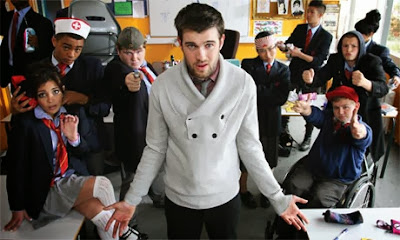Visual codes:
At the start of this film we see a lot of men in suits and in judges robes with briefcases. This indicates to us that the first setting in this film is in a courtroom. This is also indicated through the serious facial expressions of the people in this scene, and this is typical of a courtroom setting, as nobody is going to be seen to be laughing etc. Some of the people in the courtroom also wear glasses, which we usually associate with intelligence, and lawyers/barristers and known to be intelligent.
Technical codes:
Mid shots are used to show the faces of those in the scene, along with a bit of the setting, and are also used to show who is talking. Long shots are used to allow the audience to establish setting, and in this case, we are then able to confirm that the setting is a courtroom. A bird's eye view shot is used to show one of the characters, who in which has just lost his court case, so this may indicate how he is now powerless and weak. Close up's are used when we want to see who is talking, and their facial expressions when they are talking, then we as an audience are able to know the emotions of the character.
Audio codes:
Diagetic narration is used at the start of the film, which helps to lead into the main content of the film. There is also a lot of non-diagetic music at the start of the film, and as it is upbeat, this almost sets the tone of the film as being a happy one, or makes us think that the film contains some comedy. Diagetic sound is used throughout when people are talking, and there is also a lot of diagetic background noise.




